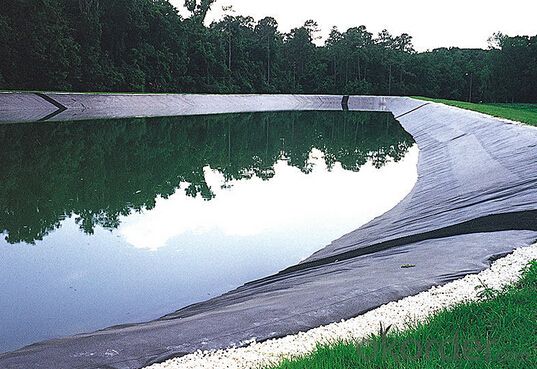- Understanding the Role of Geomembrane Liners in Waste Management
- Innovations in Geomembrane Liners for Water Management
- Geomembrane Liners: A Comprehensive Guide
- The Future of Geomembrane Liners in Civil Engineering
- Geomembrane Liners: Enhancing Landfill Stability
Manager:
WhatsApp:+86 177 0135 2670
Tel:+86 177 0135 2670
Email:marketing@okorder.com
Address:3rd Floor, No.2 Building, No.1 Sanlihe Road
The Impact of HDPE Geomembranes on Groundwater Protection
Groundwater, the hidden reservoir of life, is a precious resource that sustains ecosystems and human activities. However, its vulnerability to contamination has led to the development of various protective measures. One such measure is the use of High-Density Polyethylene (HDPE) geomembranes. These synthetic barriers are designed to prevent pollutants from reaching groundwater sources, ensuring the sustainability of this vital resource.

The Invisible Shield: hdpe Geomembranes
HDPE geomembranes are a type of flexible, impermeable material that can be used in various applications to protect groundwater. They act as an invisible shield, preventing the infiltration of contaminants into the ground. Made from high-quality polyethylene resins, these geomembranes are known for their durability, chemical resistance, and low permeability to water vapor and gases.
A Closer Look at HDPE Properties
The properties of HDPE geomembranes make them an ideal choice for groundwater protection. They are resistant to a wide range of chemicals, including acids, alkalis, and salts, which are common pollutants in industrial and agricultural settings. Moreover, HDPE is UV stabilized, ensuring that the geomembranes can withstand long-term exposure to sunlight without degrading.
Applications in Groundwater Protection
HDPE geomembranes are used in a variety of applications to safeguard our groundwater resources. They are commonly employed in landfills, waste containment facilities, and water storage reservoirs. In landfills, HDPE geomembranes prevent leachate from contaminating the surrounding soil and groundwater. In water storage reservoirs, they prevent the ingress of pollutants from the surrounding environment into the stored water.
The Environmental Impact of HDPE Geomembranes
While HDPE geomembranes are effective in protecting groundwater, it's important to consider their environmental impact. HDPE is a non-biodegradable material, which means that once it's been used, it doesn't break down naturally. However, when properly managed and disposed of, the benefits of using HDPE geomembranes for groundwater protection far outweigh the potential drawbacks.
The Role of HDPE in Sustainable Development
HDPE geomembranes play a crucial role in sustainable development by ensuring the protection of groundwater resources. By preventing contamination, they contribute to the availability of clean water for future generations. This is particularly important in areas where water scarcity is a concern, as it helps to preserve the existing water resources.
The Future of HDPE Geomembranes
As we move towards a more sustainable future, the use of HDPE geomembranes is likely to increase. Advances in technology and materials science are leading to the development of more efficient and environmentally friendly geomembranes. These innovations will further enhance the effectiveness of HDPE in protecting our groundwater resources.
Conclusion
In conclusion, HDPE geomembranes are a vital tool in the fight against groundwater contamination. Their unique properties make them an effective solution for a variety of applications. While there are environmental considerations to take into account, the benefits of using HDPE geomembranes for groundwater protection are undeniable. As we continue to innovate and develop new materials, the future looks bright for the role of HDPE in safeguarding our planet's water resources.
- Previous:Eco-Friendly Alternatives: HDPE Geomembranes in Landscape Design
- Next:HDPE Geomembranes: A Comprehensive Guide for Construction Professionals
-
2024-12-05Geomembrane Liners: A Comprehensive Guide






